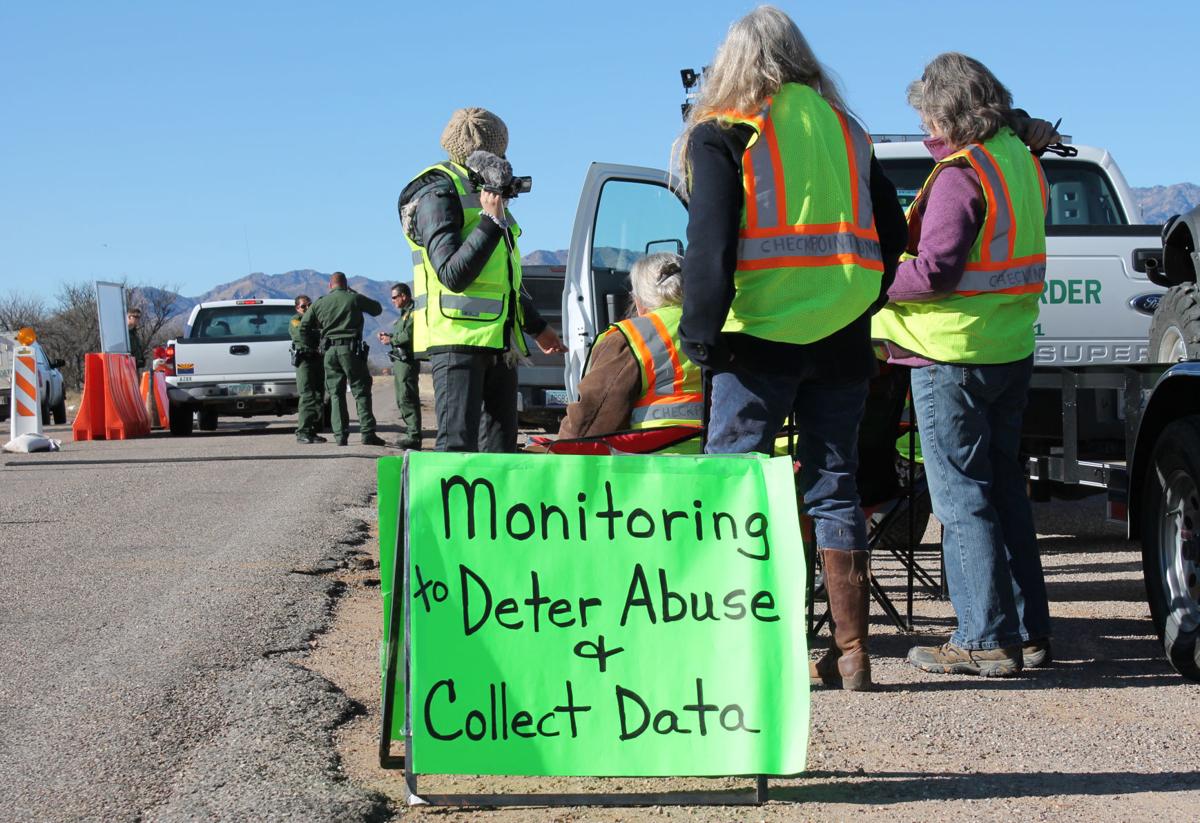Arivaca-area residents and protesters will get another chance to argue that they’re entitled to be closer to a Border Patrol checkpoint to keep an eye on what’s going on there.
The 9th Circuit Court of Appeals ruled Tuesday that Magistrate Bruce McDonald erred in throwing out a 2014 lawsuit demanding access to the site along a 319-foot stretch of Arivaca Road.
Appellate Judge Milan Smith Jr., writing for the unanimous three-judge panel, said the residents had raised a series of legitimate questions about how the area is being used and who is — and is not — allowed in the area.
Smith said the answer to those questions will determine whether they can take the case to a full-blown trial.
It is only if they win at trial that the Border Patrol could be forced to allow them to get a lot closer to the checkpoint than now allowed. That, in turn, could help address questions of whether the checkpoint is effective at finding those in the country illegally or is, as some have contended, mere harassment, particularly of motorists who appear Latino.
The fight traces its roots to 2013 when members of People Helping People began monitoring the site.
The Border Patrol responded by erecting ropes to keep them back at least 150 feet on either side of the checkpoint.
That led to the lawsuit charging the Border Patrol was violating the First Amendment rights of the would-be observers and protesters.
Smith said the strip of rural road at issue likely began as a public forum, places where individuals constitutionally are permitted to gather and protest. And while the judge said it is possible for a public forum to lose that status, such a move is considered “presumptively impermissible.”
What that means, Smith said, is the burden is on the government to prove the road has lost its public-forum status. And that, he said, will depend on the answers to a series of questions — questions that the magistrate did not allow the challengers to raise and explore.
One of these, Smith said, is whether large portions of that 319-foot enforcement zone are actually being used for checkpoint activities. If not, he suggested, that raises the possibility that the Border Patrol has not met its legal obligation to narrow the restricted area to the smallest area necessary.
Smith also said the Border Patrol has declared that the public is not entitled in be in the enforcement zone.
“The record shows that other visitors who were not protesting have been allowed inside,” the judge noted. That, in turn, could undermine the government’s argument that its exclusion area is not being neutrally enforced as required by law, but only designed to keep out the protesters.
The judge also said that the plaintiffs are entitled to information from Border Patrol about the traffic stops made at the checkpoint, information they would compare with what they are able to observe from a distance.
“This information is relevant to whether (plaintiffs) have ample alternative opportunities for observation, as would be required to justify their exclusion from a public forum,” Smith wrote.
Without those answers, the judge said, there is insufficient information to decide if the enforcement zone is a nonpublic forum from which the public can be excluded.
Tuesday’s ruling is, in some ways, not a surprise.
During arguments in December, Smith told a government attorney that the Border Patrol has a legitimate right to operate a checkpoint. And he said it may be that putting up the ropes is appropriate.
“But it seems to me that when you’re talking about people wanting to exercise their First Amendment rights to observe, where they’re placed is a reasonable, material issue that the court ought to consider,” he said. “Somebody has to decide that.”
And Judge Sandra Ikuta said she, too, was concerned about how much latitude the government has in deciding what can be declared off-limits to observers.





